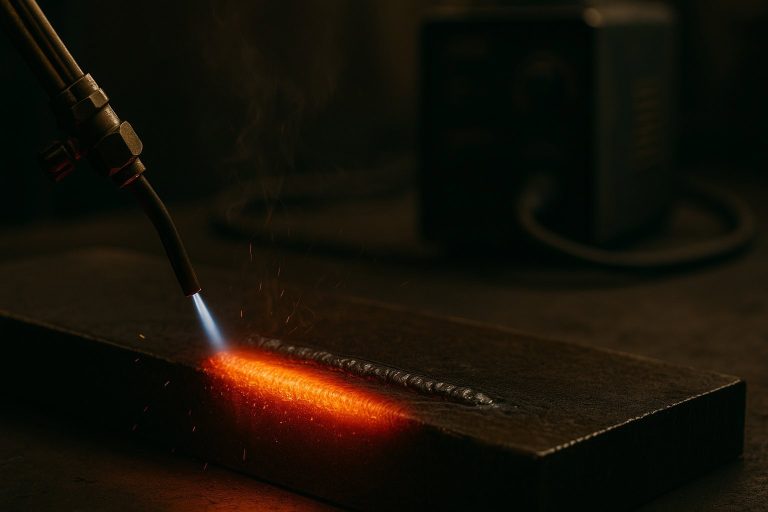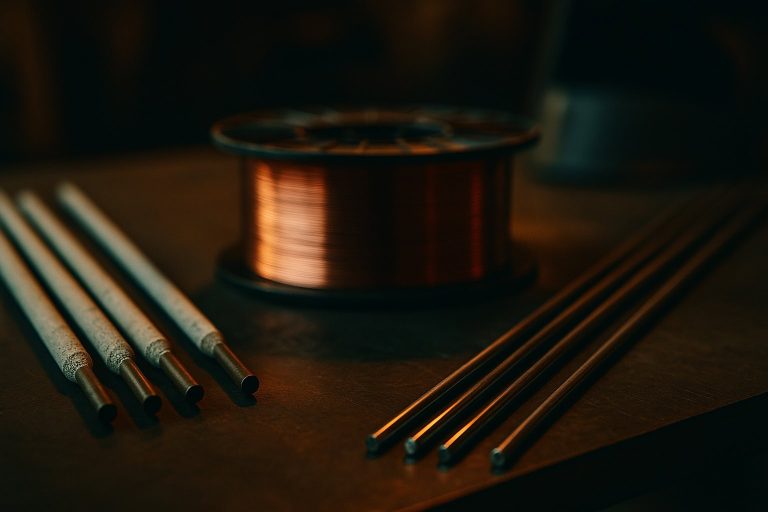A Summary and Review of Stick Welding
May 27, 2022

Shielded Metal Arc Welding (SMAW), also called Stick welding, is the most common type of arc welding. Charles L. Coffin patented SMAW in 1889 and it has been a widely popular process among welders ever since. It can be used both in the production and manufacture of new products and for repairing older ones.
What is Stick Welding?
A simplified explanation of the process is that an electrode, shaped like a stick and coated with flux, is used to form the weld. Electricity, either alternating current (AC) or Direct Current (DC), from the power supply forms an arc between the electrode, which is the “stick,” and the two metals that need to be joined.
There are electrodes for AC and DC machines. You choose an electrode that will work with your machine. Some machines can use both AC and DC.
The electrode is consumable, meaning it evaporates and, as it does that, the flux coating disintegrates, creating gasses that form a cloud around the weld. The gasses shield it from water vapor, oxygen, and other contaminants and this prevents oxidation.
The process got its name because the electrode creates its own shield, so the process is known as “Shielded Metal Arc Welding.” There is no need for a separate canister that has a shielding gas.
The gas cloud formed by the dissolving flux then settles on the metal. When it is cooled, the flux turns into slag. The slag is then chipped off, and the welding process is complete.
What Types of Metals are Used in Stick Welding?
Stick welding works best on thicker metals. The most common ones used are:
- Chrome
- Nickel-based alloys
- Stainless steel
- Cast iron and carbon steel
- Stainless steel to regular steel
Aluminum can be used but is not generally recommended because it is not thick enough. A careful stick welder can work with aluminum but needs to keep in mind that a possible complication is overheating which can cause the weld to disintegrate and drop to the floor.
Industries Where Stick Welding is Used
Stick welding is frequently used in the following industries.
- Aerospace
- Construction
- Field repair
- Manufacturing
- Marine and shipbuilding
- Mining
- Nuclear
- Petroleum
- Steel fabrication
- Structural welding
- Power plant construction
Advantages of Stick Welding
Like any process in welding, there are advantages and disadvantages. Some advantages are:
- The required equipment is inexpensive.
- It can be done both indoors and out.
- Different electrodes are used for different metals, and it is easy to change them.
- Although it is a process best used for thick metals, there are many metals and alloys that can be welded easily by this process.
- It can be used on painted surfaces and rusted ones if the rust is thoroughly cleaned before the welding process begins.
Disadvantages of Stick Welding
- It is difficult to use Stick welding for working on thin metals.
- There is slag that must be chipped away.
- The electrodes need to be replaced frequently.
- It is a slower process than some other types of welding.
- Stick welding is not good for reactive metals.
Whether you want to learn Stick welding to advance your career or because your hobbies call out for you to learn it, you will find all the equipment you need plus training at Vern Lewis Welding Supply, Inc. There are 9 locations in Arizona, so you can find one near you. Contact us for more information.
Sources:
- https://waterwelders.com/what-is-stick-welding/
- https://waterwelders.com/what-is-arc-welding/
- https://gowelding.org/welding/stick-smaw/
- https://www.youtube.com/watch?v=3_K9-kB6HRk
- https://weldingheadquarters.com/when-to-stick-weld-vs-mig/
- https://www.longevity-inc.com/resources/resources/improving-your-skills/stick-welding-basics#:~:text=INTRODUCTION%20TO%20STICK%20WELDING,introduced%20in%20the%20mid%2D1800s.
Join Our Newsletter
Sign up for our newsletter to receive specials offers, product updates, and more!






